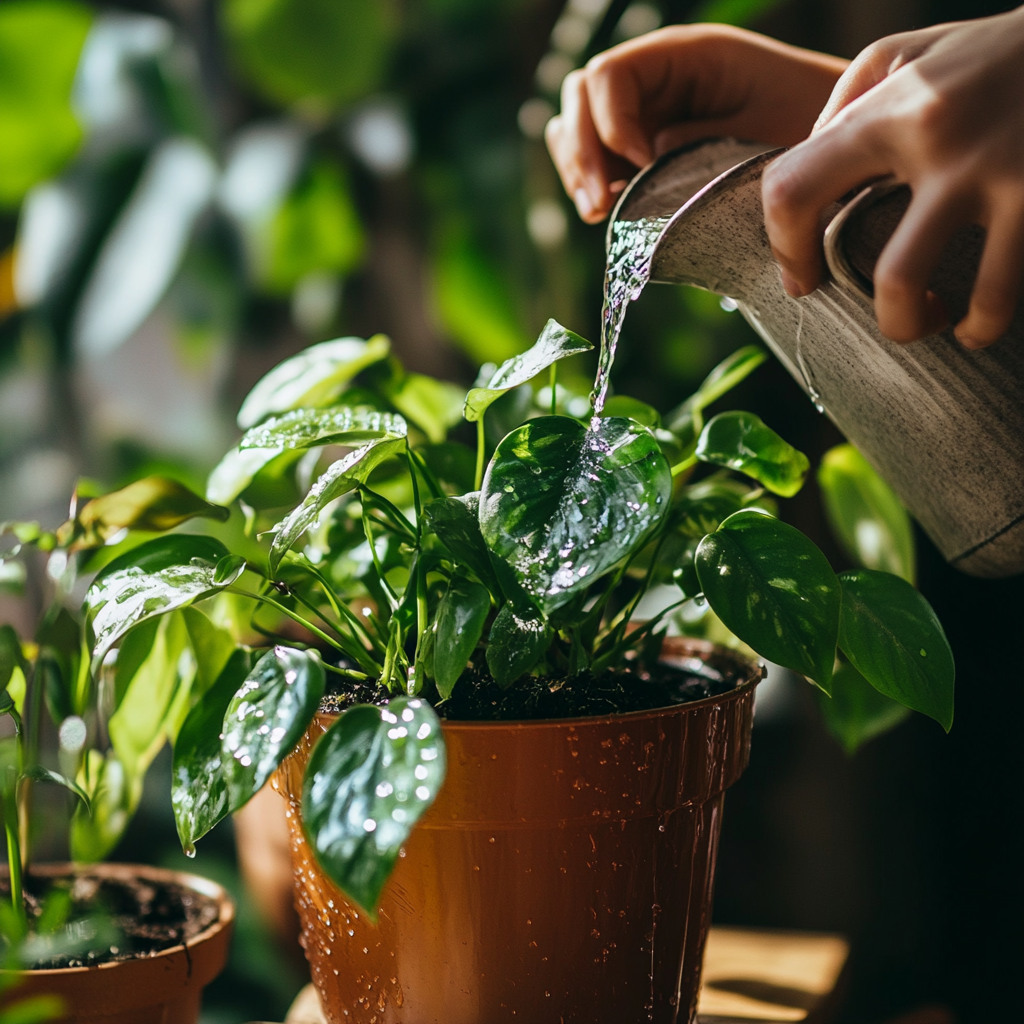Indoor plants are the most decorative elements that people use to beautify their house. They are an upgraded lifestyle and can transform an apartment into a tranquil, lively, and inviting space. Indoor plants improve indoor air quality and give your space a little greenery. But not all plants survive indoors and in apartments. The main problems in growing plants in apartments are limited space, low light, and the presence of pets. This article helps to discover the best plants that grow well in apartments and focuses on plants that are beginner-friendly, pet-safe, and perfectly suited to small spaces.
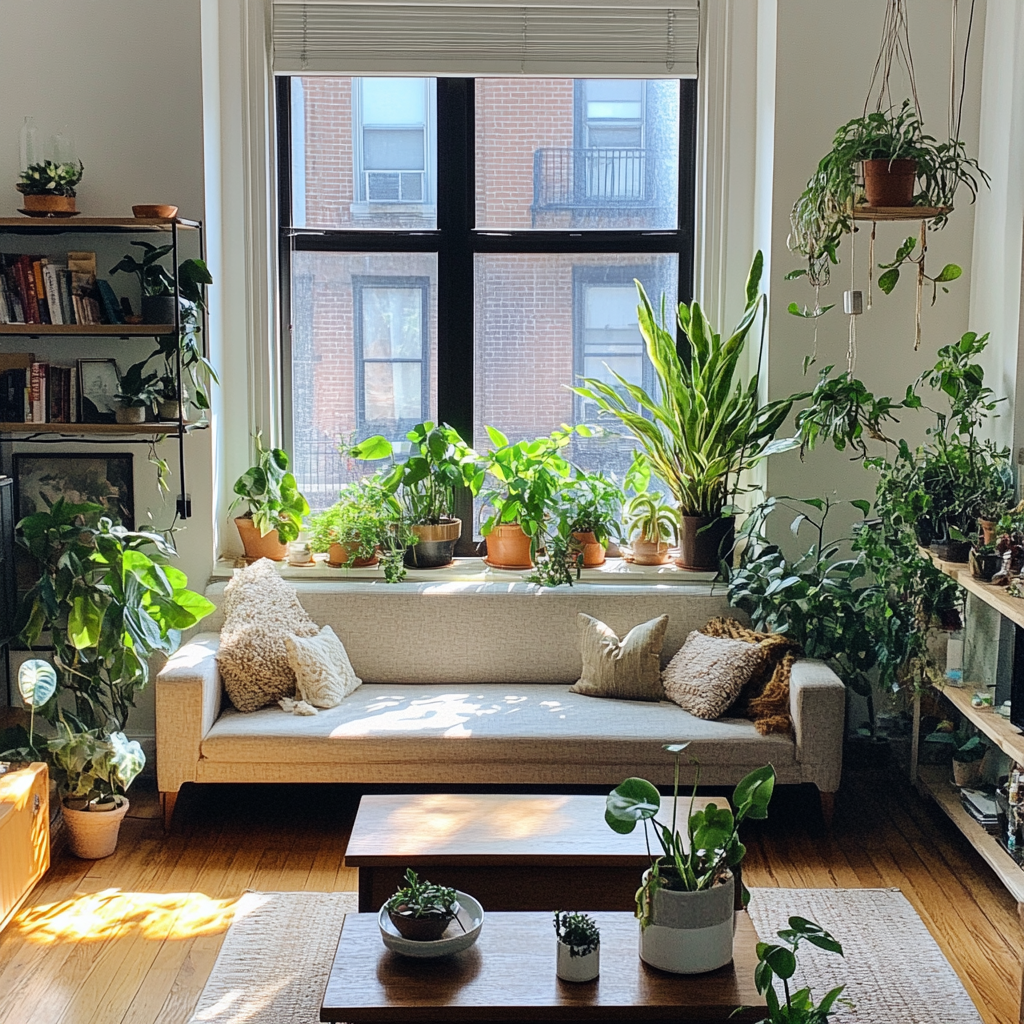
Considerations for Indoor Plants
Light Availability
Natural light is limited in many apartments; particularly in cities, natural light is very low. Light is important for selecting indoor plants. Before planting, you need to consider if you have bright windows or if you need artificial light. Some plants, like the snake plant, thrive in low light, while others need bright, indirect sunlight.
Space Constraints
Choosing plants that do not require large space is essential because apartments have limited space. Compact plants can maximize greenery without taking up valuable space.
Maintenance Level
Think about the amount of time and effort you can give to this purpose. Low-maintenance plants like the ZZ Plant are perfect for beginners or busy professionals.
Pet-Friendliness
If you have pets, the safety of your pet is the first concern There are several indoor plants that might poison animals. Pet-friendly options, such as the spider plant, let you enjoy a little greenery while keeping your furry friends safe.
Humidity and Temperature
Indoor plants thrive best when their natural habitat is mimicked. Check whether your apartment’s humidity and temperature levels align with the plant’s needs. For example, tropical plants like Calathea prefer higher humidity, while succulents thrive in drier conditions.
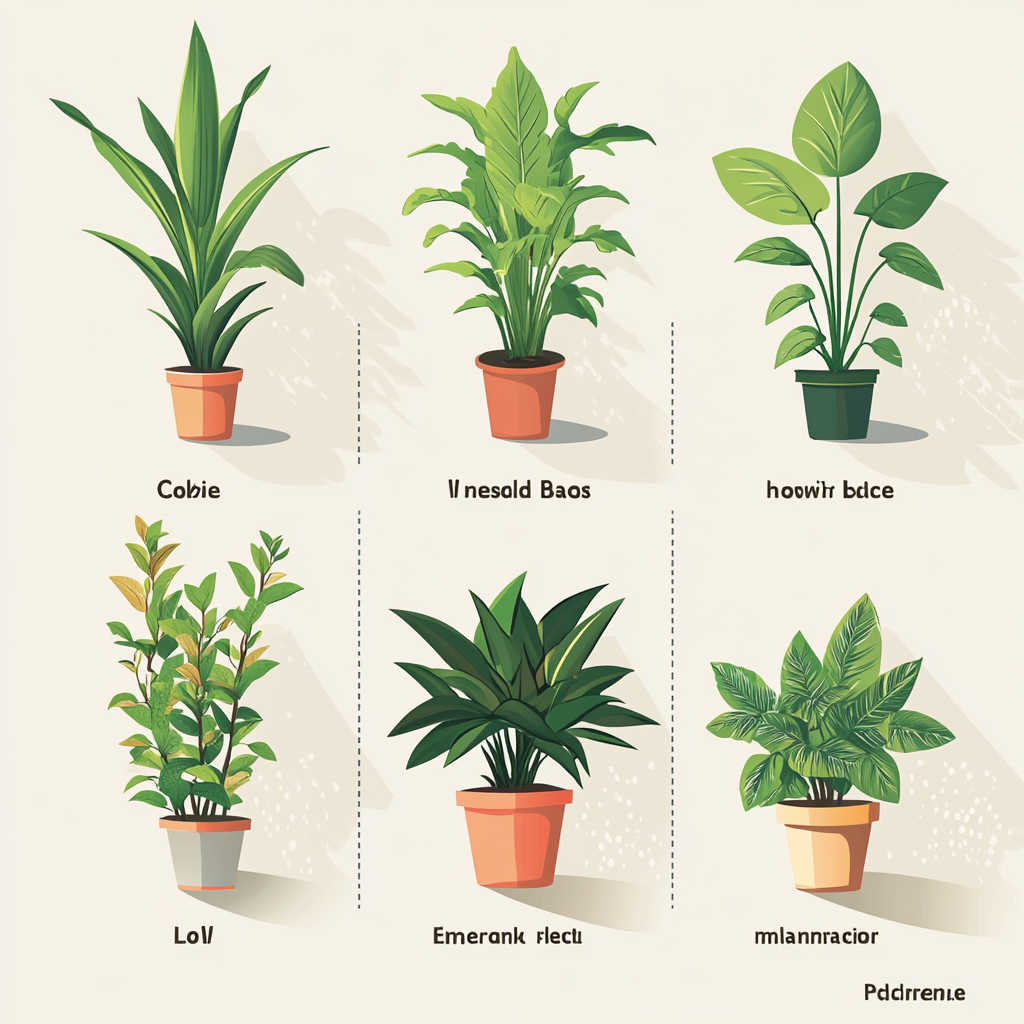
Top Plants That Grow Well in Apartments
Low-Light and Hardy Plants
Perfect for apartments with minimal natural light, these resilient plants are almost impossible to kill.
Snake Plant (Sansevieria)
The Snake Plant is the best choice for busy people, and it is the low-maintenance greenery. It purifies air and thrives in dimly lit corners, requiring watering only once every couple of weeks.
ZZ Plant (Zamioculcas zamiifolia)
The ZZ Plant boasts glossy, waxy leaves and is extremely tolerant of neglect. It grows well in low light and requires minimal watering, making it ideal for busy apartment dwellers.
Chinese Evergreen (Aglaonema)
The Chinese Evergreen adds a decorative touch with its patterned leaves. It’s adaptable to various light conditions, though it prefers moderate to low light.
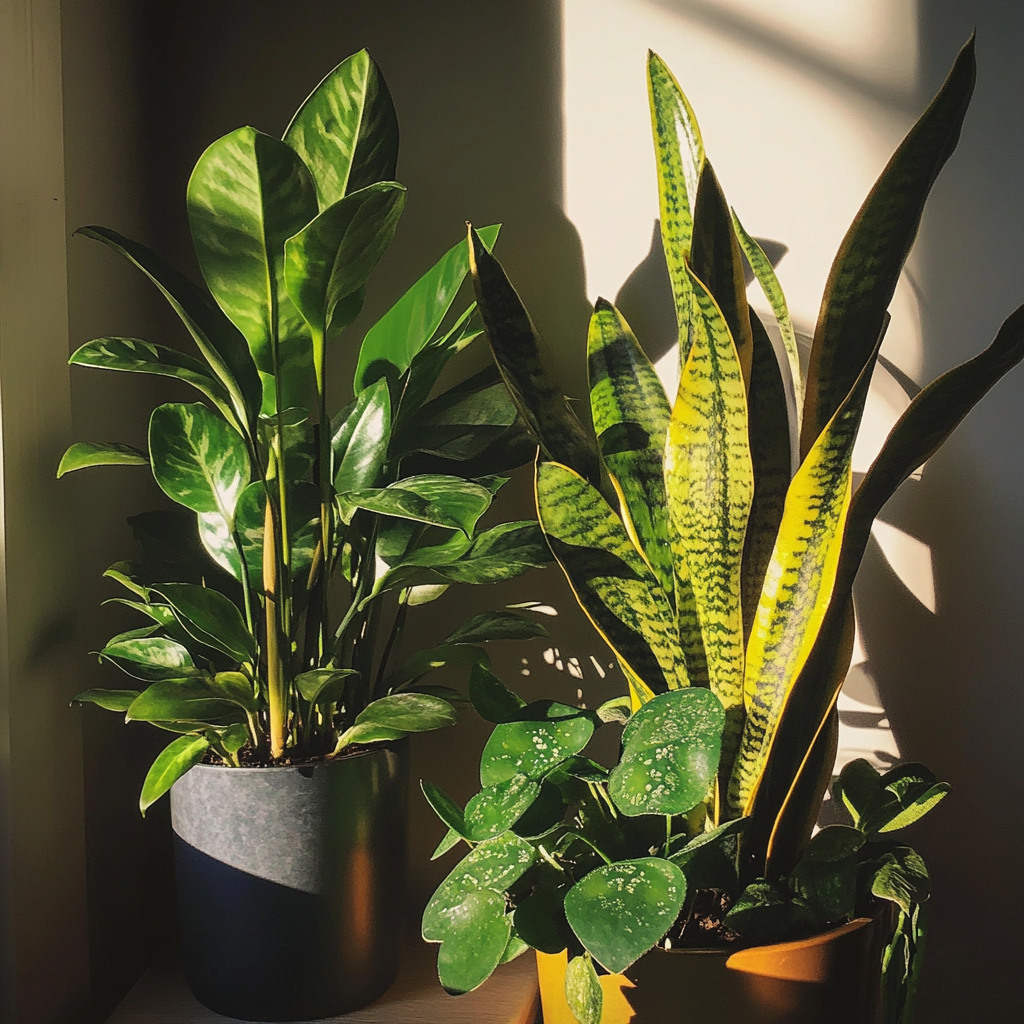
Compact and Decorative Plants
For apartments short on space, these plants combine aesthetic appeal with practicality:
Pincushion Peperomia (Peperomia ferreyrae)
This compact plant features quirky, fleshy leaves that look like a pincushion. It’s perfect for small desks and thrives in moderate light.
Silver Sprinkles (Pilea glauca)
A fine-trailing plant with silver-tinged leaves. Silver Sprinkles is great for hanging planters or windowsills. Its cascading growth adds a touch of elegance.
Wax Vine (Hoya carnosa)
Also known as the “porcelain flower,” this plant produces clusters of star-shaped blooms. It’s a low-maintenance climber that prefers bright, indirect light.
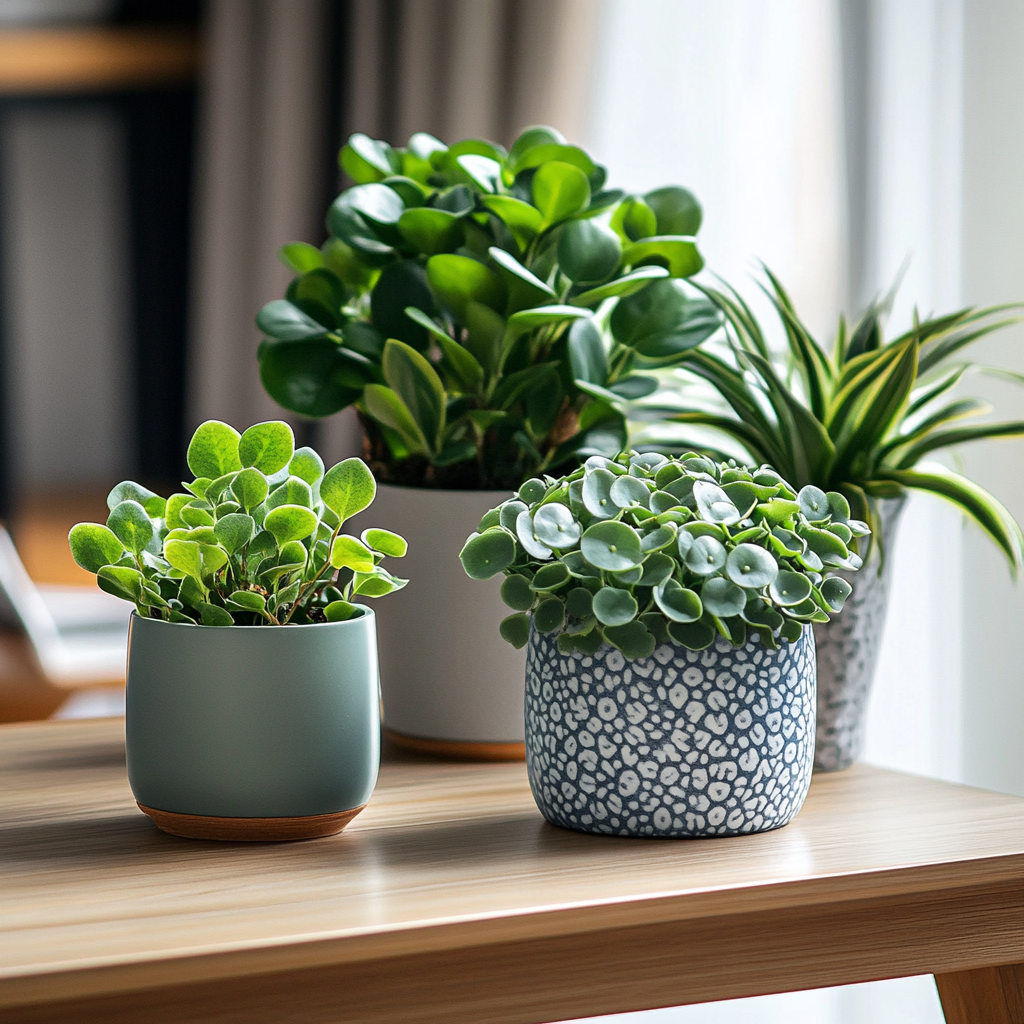
Eye-Catching Plants for Style
These plants are best for décor, adding a bold aesthetic to your apartment.
Zebra Plant (Aphelandra squarrosa)
The Zebra Plant is a showstopper with its striking striped leaves. It requires consistent watering and bright, indirect light.
Lucky Bamboo (Dracaena sanderiana)
Lucky Bamboo grows easily in water or soil. Its simple, sculptural look makes it a favorite for modern apartments.
Philodendron (Philodendron spp.)
A versatile plant with lush, heart-shaped leaves. The Philodendron thrives in low to bright indirect light. It can be grown as a climber or in a hanging basket.
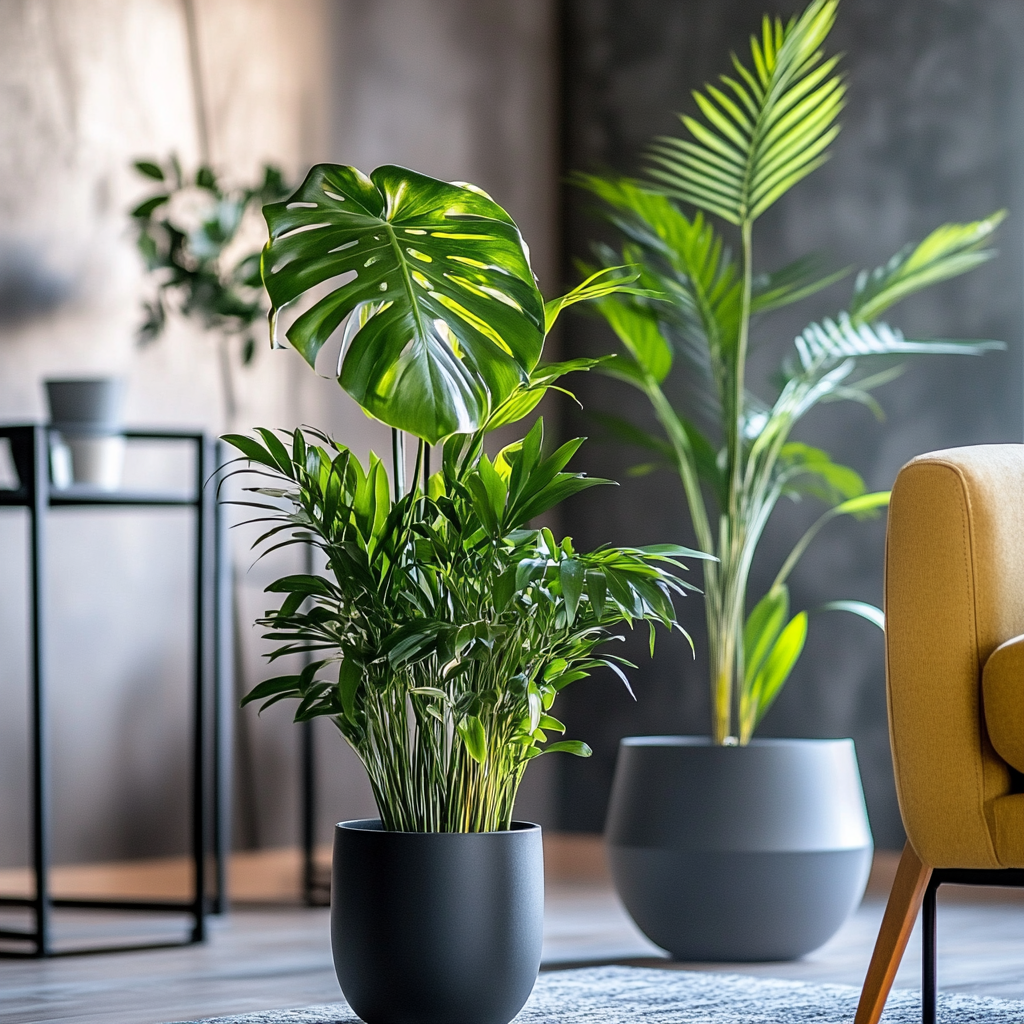
Pet-Friendly Plants
For households with pets, these non-toxic plants ensure peace of mind.
Areca Palm (Dypsis lutescens)
The Areca Palm is a tall, elegant plant that’s safe for cats and dogs. The best place to plant them is in bright, indirect light. They require regular watering.
Calathea (Calathea spp.)
It is known for its vibrant, patterned foliage. Calathea is both pet-safe and a stunning addition to any room. It prefers higher humidity and mild to low light.
Spider Plant (Chlorophytum comosum)
A classic choice for beginners, the spider plant is resilient, air-purifying, and safe for pets. It grows well in hanging baskets and thrives in indirect light.
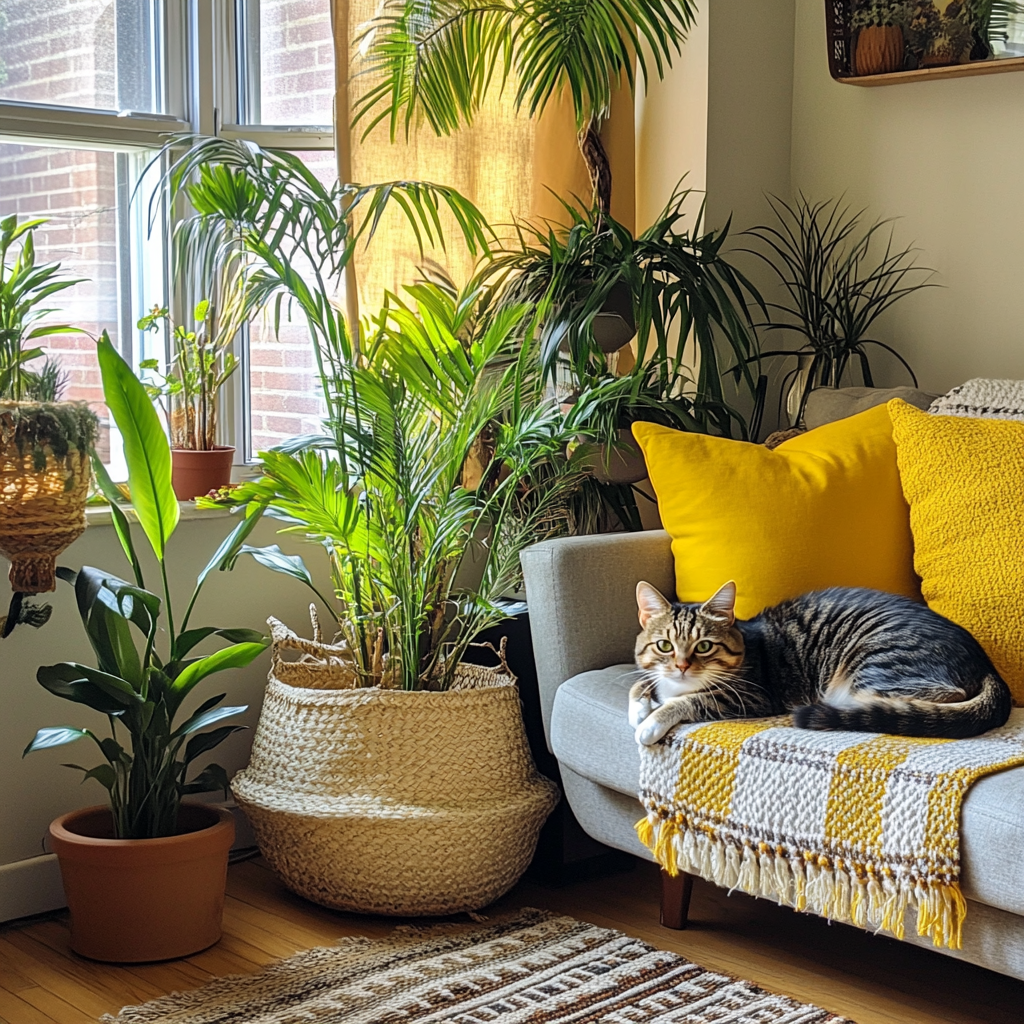
Caring for Your Apartment Plants
Watering:
Establish a consistent watering routine based on each plant’s needs. Overwatering is a common mistake that leads to root rot.
Light Requirements:
Place plants according to their light preferences. For example, keep low-light plants like the ZZ Plant away from direct sunlight, which can scorch their leaves. Consider using grow lights in dimly lit apartments.
Soil and Potting:
Choose the right soil mix for each plant. For instance, succulents require sandy, well-draining soil, while tropical plants prefer moisture-retaining mixes. Repot plants every 1-2 years or when roots outgrow their container.
Fertilizing:
Feed your plants with fertilizer during their growing season (spring and summer). Use a balanced, water-soluble fertilizer for the best results.
Pest Management:
Plants should be inspected on a regular basis for pests such as aphids and spider mites.Wipe leaves with soapy water or use neem oil to treat infestations. Ensure good air flow to prevent mold and fungal growth.

Common Mistakes to Avoid:
- Overwatering or Underwatering: Know your plant’s specific water needs and stick to them.
- Unsuitable Light Conditions: Placing plants in too much or too little light can stunt growth and cause damage.
- Non-Pet-Friendly Plants: Always check a plant’s toxicity level before bringing it home to a pet-friendly environment.
- Neglecting Maintenance: Regular pruning, cleaning, and checking for pests are essential for healthy plants.
